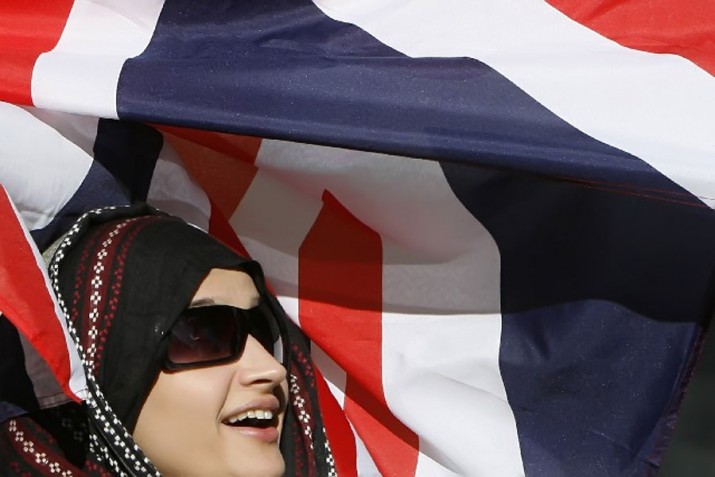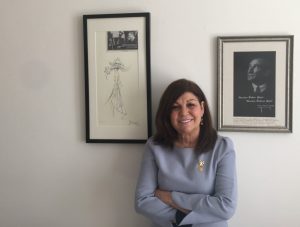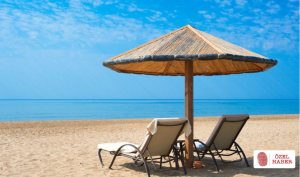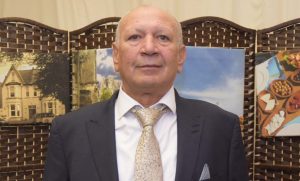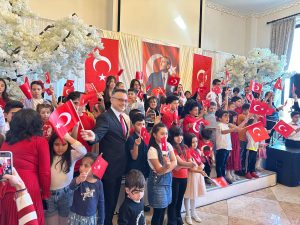Britain’s Muslim story
Ramadan, the most holy month of the year for Muslims, is an ideal moment to learn what the faith is all about and how it arrived in this country
Ramadan, the most holy month of the year for Muslims, is an ideal moment to learn what the faith is all about and how it arrived in this country

Islam is the fastest growing religion in the world. It is also the second largest religion with over a billion followers.
Muslims believe that Islam was revealed over 1400 years ago in Mecca, through Muhammad, the last prophet to be sent by God. Muslims across the world fast during the holy month of Ramadan, the ninth month of the Islamic calendar, as one of the five pillars of Islam.
This year Ramadan begins on 18 June and continues until 16 July, ending the holy month with ‘Eid-ul-Fitr’ (Ramazan/Şeker Bayramı in Turkish), the festival of Breaking of the Fast. During the month of Ramadan, fasting Muslims will abstain from food, drink and certain other activities during daylight hours.
Muslims see this as a time of worship and contemplation and to fulfil God’s commandments and grow one’s soul while strengthening family and community ties, and be on one’s best behaviour.
FIRST PRESENCE
As early as 1627 there were said to be nearly forty Muslims living here in London working as tailors, shoemakers, button makers and one even as a solicitor.
There is some evidence of Ottoman Muslims travelling to England from the end of the sixteenth century. A merchant named Ahmet Efendi, accompanied by a certain Niqula, were believed to be the first Turks to arrive in England.
TURKISH BATHS
A Turkish bath, opened in 1679, also testifies to the presence of Turks in London at that time.
As early as 1777 Monshee Mahomet Saeed from Bengal was advertising for pupils in London; another who acquired prominence was Sake Deen Mohammed who came with Captain Baker of the East India Regiment in 1784 and was one of the first to settle permanently in England. He set up an ‘Indian Vapour Bath and Shampooing Establishment’ in Brighton.
While he was highly popular with the public, his success was sealed when he was appointed ‘Shampooing Surgeon to His Majesty George IV’.
MUSLIMS IN THE VICTORIAN CENSUS
The frequency and duration of Ottoman sailors and traders visiting British ports increased during the nineteenth century with some taking up permanent residence.
For instance, according to the 1881 census, there were 8 Egyptians and 44 Turks resident in Merseyside. A transient Muslim population was to be found in the ports and urban centres of Britain in the late 1880s.

Arab sailors arrived on trading vessels and war ships belonging to the Ottoman navy, while large numbers of lascars, or sailors, from different parts of the Indian subcontinent worked on British vessels.
THE INDIAN EFFECT
Indeed, from the early nineteenth century onwards, Indian Muslims started to visit Britain in larger numbers.
Muslim migration to Britain leading to the evolution of ‘settler ‘ communities of any significant size can be traced as far back as the middle of the nineteenth century when the first relatively permanent Muslim populations were established in Manchester, Cardiff, Liverpool, South Shields, and here in the East End of London.
As Muslims settled in Britain, they gradually established institutions that they hoped would enable them to meet their material and spiritual needs.
Yemeni and Somali Muslim seamen set up makeshift prayer rooms in their dockyard communities in Cardiff and South Shields in the second half of the nineteenth century. An interesting example was the complex developed by an indigenous convert, Abdullah Quilliam.
LIVERPOOL’S MUSLIMS
The Liverpool Muslim Institute – containing a prayer room, an orphanage, a press and a school, the Liverpool Muslim Institute – flourished in the 1890s. It served a significant Muslim community in an environment that was becoming virulently hostile from top to bottom with the Prime Minister William Gladstone – a practising Christian – railing at the alleged atrocities being committed by the Ottoman Turks on their Bulgarian Armenian subjects.
With the construction of the Shahjehan Mosque in Woking in 1889 – the first purpose-built mosque anywhere in Western Europe – the centre of the Muslim community in Britain shifted there. A number of prominent converts contributed to its cultural and religious activities.
Among them were some notable figures such as the Cambridge educated peer, Lord al-Farooq Headley; the author of the ‘Meaning of the Glorious Quran’, Marmaduke Pickthall and Lady Evelyn Zaineb Cobbold, probably the first English woman to go on pilgrimage to Mecca in 1934.
THE COMMUNITIES TODAY
While Islam is becoming more and more popular, liberalisation and secularisation is also on rise. Islam is also practiced differently in different parts of the world: geographical, economic, and cultural factors all have an effect on this, meaning that Muslims have had to adapt and develop new practicable version of Islam in order to assimilate and adapt.
Recent research has revealed there are 15 million Muslims, of which four million are Turks, living in European Union coutnries. 68% of Turkish Muslims live in Germany. France has Europe’s greatest density of Muslims at 8.1% of its entire population, around five million people.
Poland is home to the fewest number of Muslims in Europe, at just 0.005% of the population, which equates to around 4000 people.
Britain has Europe’s third largest Muslim population, after France and Germany. According to the 2011 Census there are 2.7 million living in the country, constituting 4.8% of the total population. The vast majority of Muslims in the United Kingdom live in London, but many others living in Birmingham, Blackburn, Bradford and Luton.
Census analysis showed that 35% of the population of Tower Hamlets is Muslim, some 100,000 people. The majority of the Muslim population is South Asian: 43% Pakistani, 17% Bangladeshi and 9% Indian.
MOST CONVERTS ARE WOMEN
Dr Khizar Humayun Ansari, director of the Centre for Ethnic Minority Studies at Royal Holloway, University of London, says the Muslim Presence in Britain shows there are around 100,000 converts to Islam in Britain, a majority of them women.
The Muslim Council of Britain believes there are around 3,000 enduring Muslim organisations in Britain, of which about half are primarily involved with running religious schools and community centres.
The vast majority are locally focused organisations and probably about half are registered charities, although many of these have only trivial amounts of finance. Many more have tiny memberships and are short-lived.
However a fair number claim to act as umbrella organisations, mostly around specific issues.

